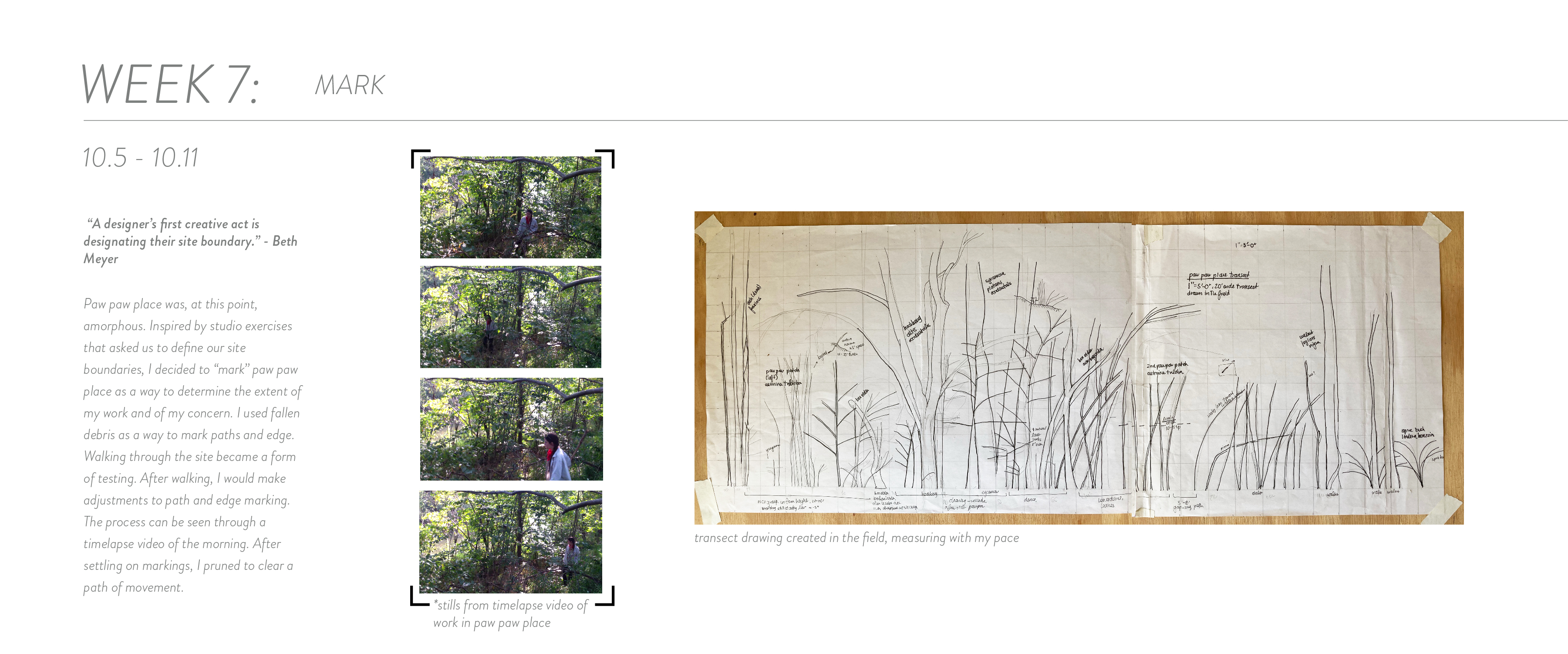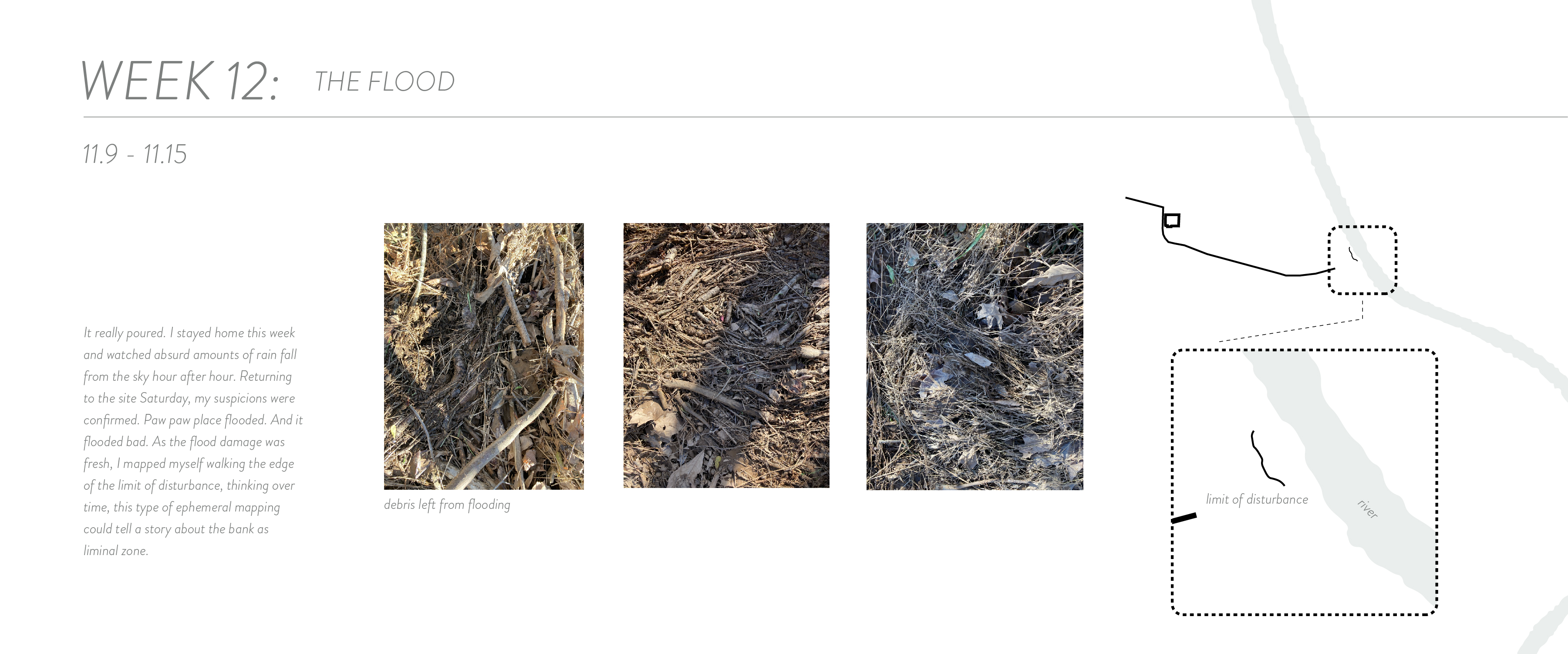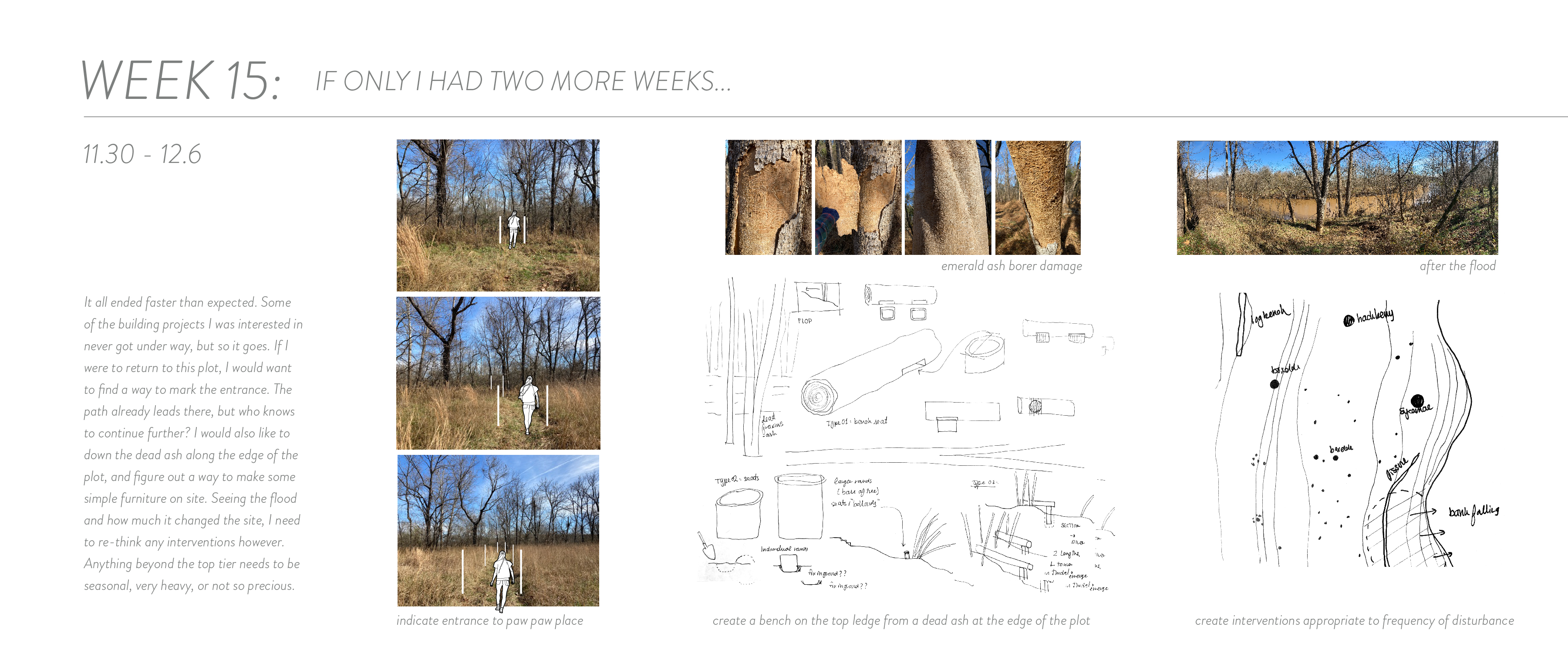To Walk, to Prune
Grounding a Viridic Practice
(as defined by Julian Raxworthy in Overgrown)
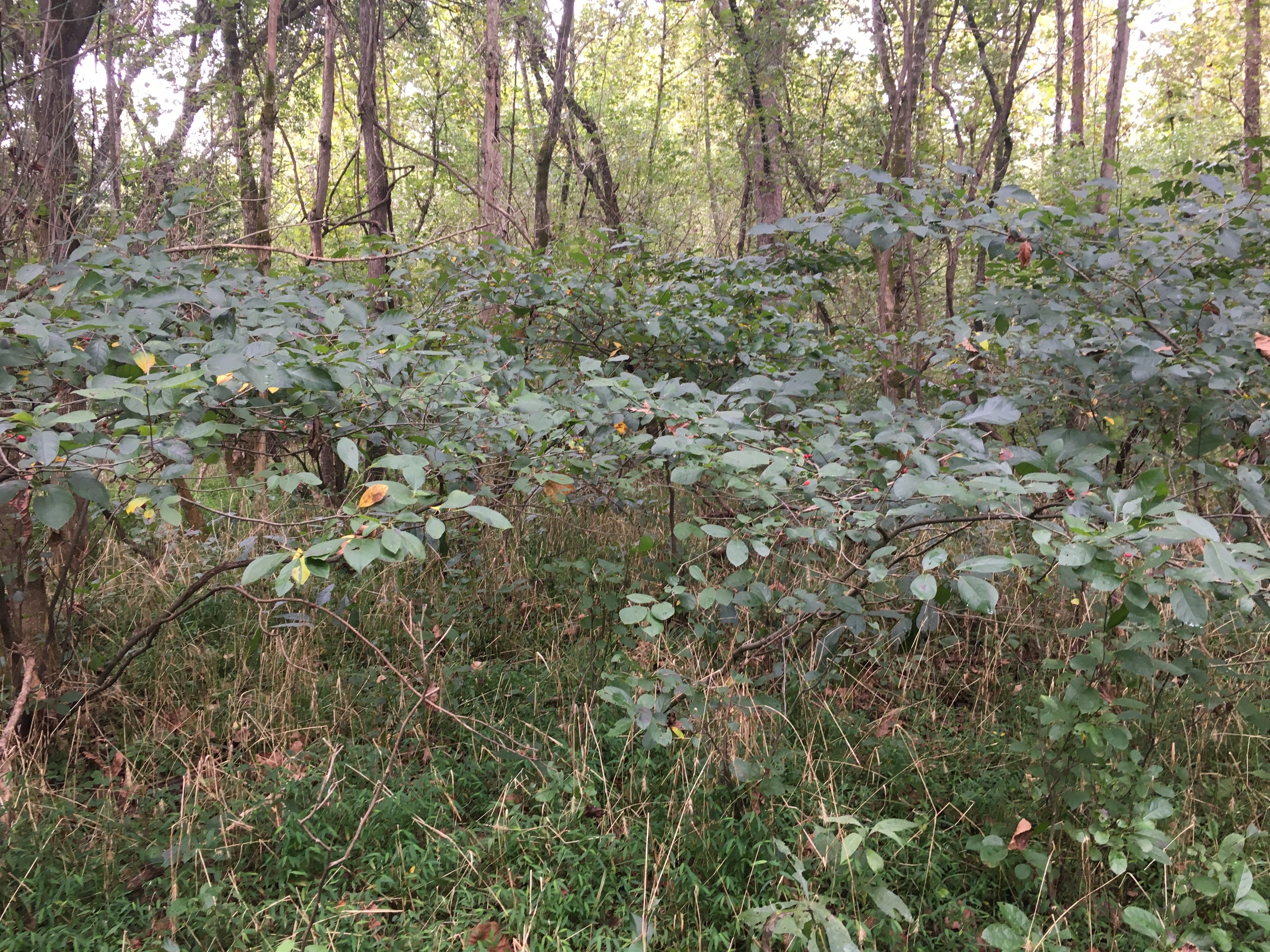
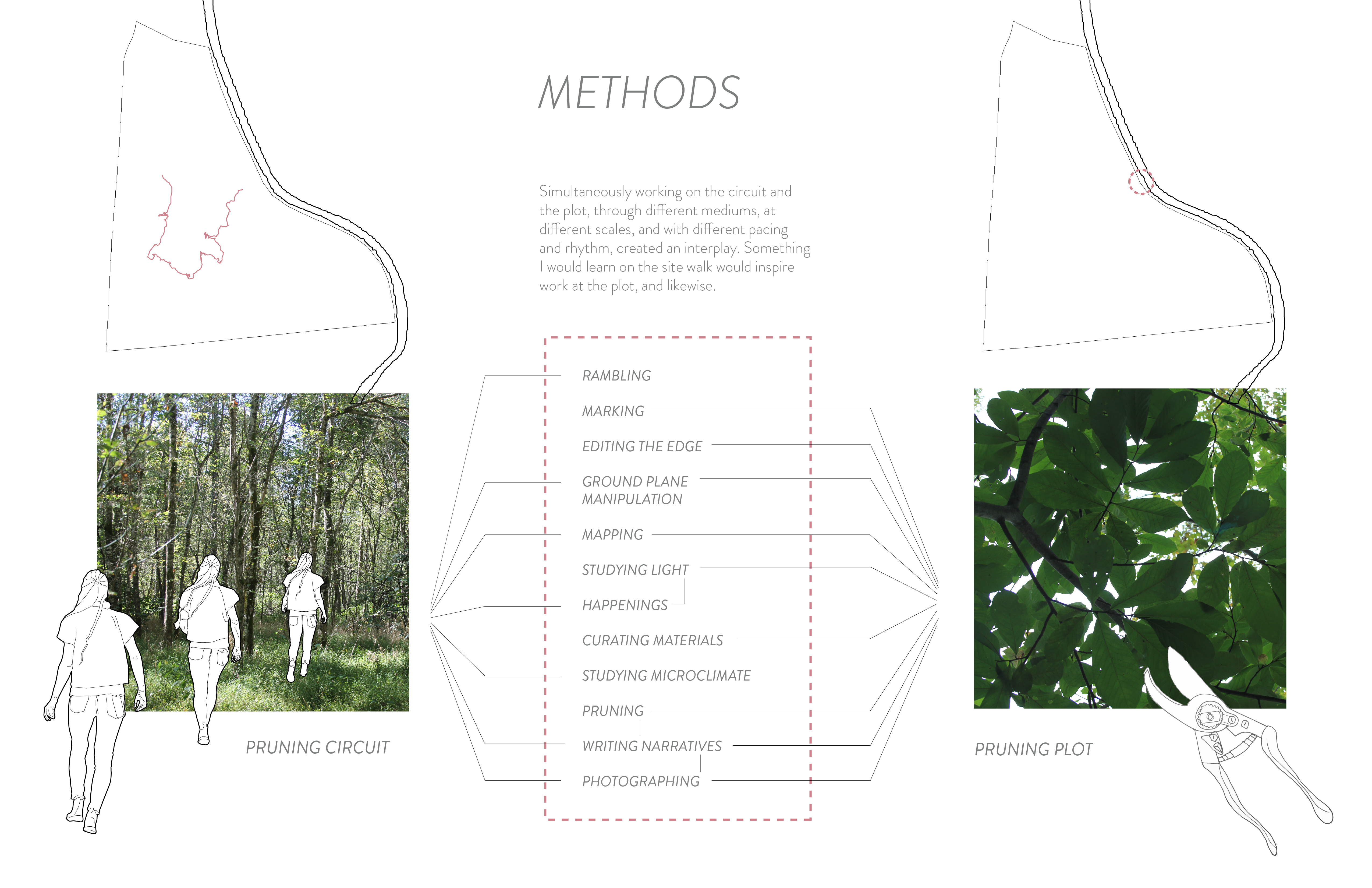
“The nature of the viridic is inherently recursive and iterative, constantly changing from cause to effect, whereby the latest effects cause subsequent ones” - Julian Raxworthy, Overgrown
To Walk, To Prune: Grounding a Viridic Practice was an independent project developed by Hannah Jane Brown (MLA, 2022) and advised by Bradley Cantrell during the 2020 fall semester. The research project asks how a site-specific, viridic practice might become part of a landscape architecture education, and explores this question through practices of walking and pruning. Research throughout considered aesthetics, gardening as metaphor and practice, and the role of 1:1 site and time experience in more-than-human worldbuilding.
The exploration developed a pruning circuit and a prototypical pruning plot, affectionately named Paw Paw Place. The pruning circuit is a one-mile loop that moves through diverse plant communities and planted forms. It is an organizing element: a path for walking, a scaffolding for collecting qualitative and quantitative data from many people over time, and a spine that can stitch together future pruning plots.
Paw Paw Place served as a prototype of the experimental plots that could occur along the pruning circuit, each a response to the particulars of the existing and an ongoing dialogue with the emergent. In this project, Paw Paw Place served as a grounds for studying and altering spatial form, aesthetic experience, and affect through pruning.
The project includes experimental representations and exploratory writings that attempt to situate the work within broader, theoretical discourse. Representations and impressions were created after that fact. Each week, the site guided interventions. In privileging intuitive responses over premeditated interventions, representations become records rather than scripts.
To Walk, To Prune: Grounding a Viridic Practice was an independent project developed by Hannah Jane Brown (MLA, 2022) and advised by Bradley Cantrell during the 2020 fall semester. The research project asks how a site-specific, viridic practice might become part of a landscape architecture education, and explores this question through practices of walking and pruning. Research throughout considered aesthetics, gardening as metaphor and practice, and the role of 1:1 site and time experience in more-than-human worldbuilding.
The exploration developed a pruning circuit and a prototypical pruning plot, affectionately named Paw Paw Place. The pruning circuit is a one-mile loop that moves through diverse plant communities and planted forms. It is an organizing element: a path for walking, a scaffolding for collecting qualitative and quantitative data from many people over time, and a spine that can stitch together future pruning plots.
Paw Paw Place served as a prototype of the experimental plots that could occur along the pruning circuit, each a response to the particulars of the existing and an ongoing dialogue with the emergent. In this project, Paw Paw Place served as a grounds for studying and altering spatial form, aesthetic experience, and affect through pruning.
The project includes experimental representations and exploratory writings that attempt to situate the work within broader, theoretical discourse. Representations and impressions were created after that fact. Each week, the site guided interventions. In privileging intuitive responses over premeditated interventions, representations become records rather than scripts.
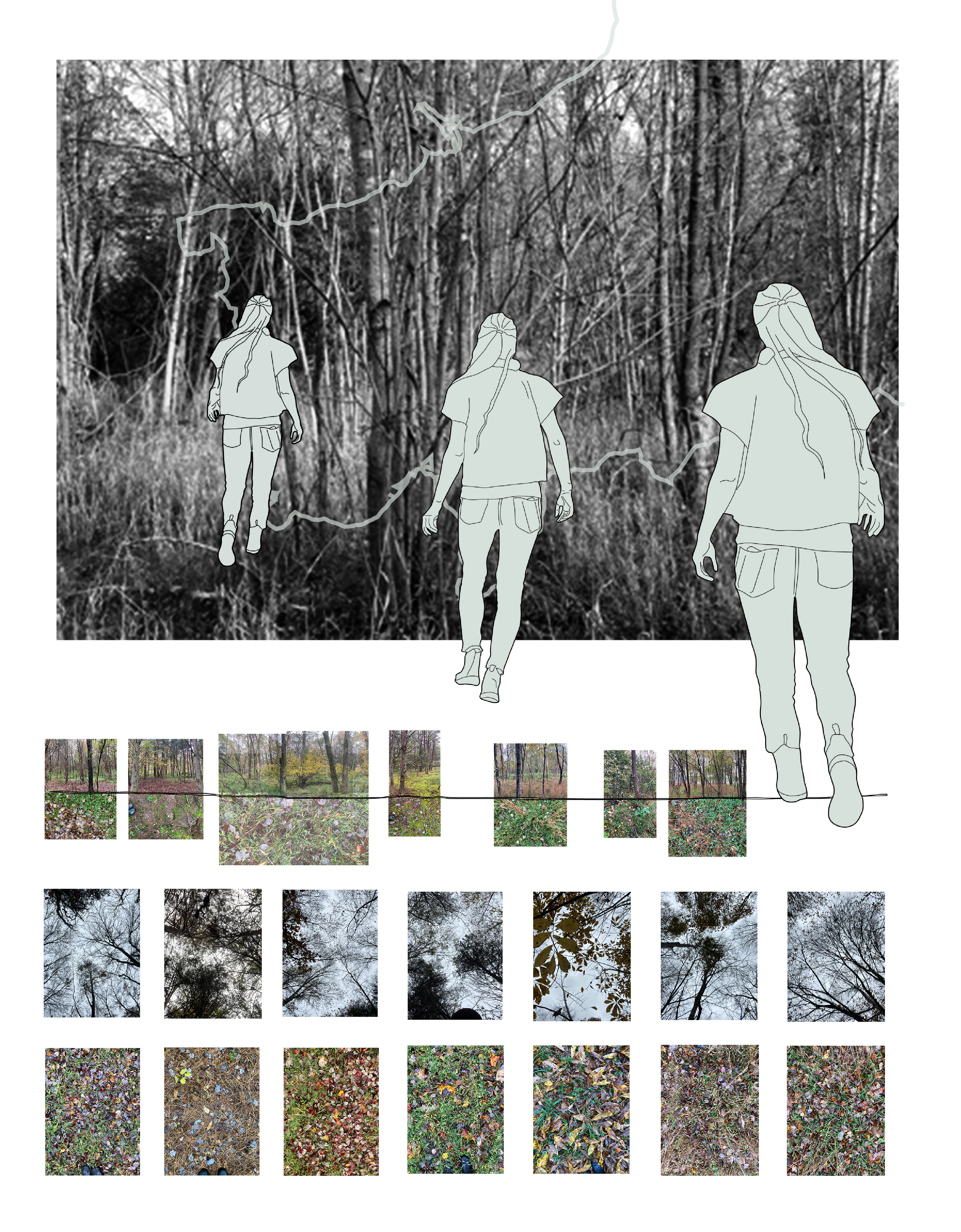

“The simultaneous act of moving through the landscape and recording the movements produces an experience that is at once physically perceived and rationally constructed. [...] All imagery and data are site-specific, as well as temporally and climatically specific. The production of landscape simulacra is replaced with up-to-the-minute knowledge and first-hand documentation” - Katherine Jenkins, Field Exercises
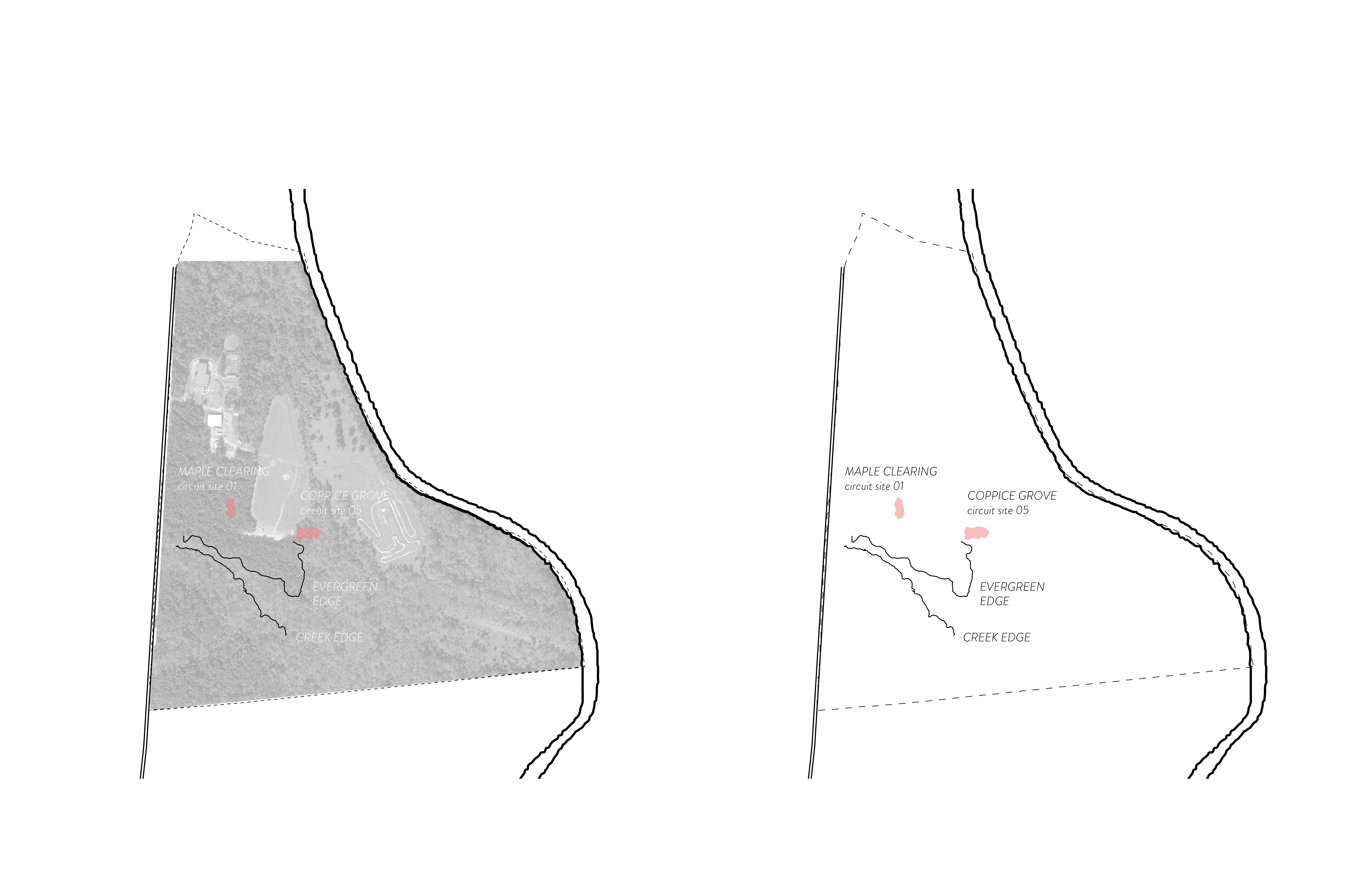 Examining an aerial photo of Milton, the “forest” is an undifferentiated mass. It is only through walking the site that the patchwork of odd ecologies, transitional edges, and shifting spatial experiences become legible. All semester, I mapped my walks through these spaces, my path of movement becoming the thread stitching them together into a circuit. Studying these mapped walks laid over an aerial, and realizing the disconnect between my experience and what I could discern from the image, I was inspired to use walking as mapping to locate these experiences. On 11/19/20, I walked the boundary of two of my study sites along the circuit, as well as the evergreen edge, where planted pines and cedars open up into a flood plain of serpentine red maples and slowly disintegrating ash, and the creek course beyond.
Examining an aerial photo of Milton, the “forest” is an undifferentiated mass. It is only through walking the site that the patchwork of odd ecologies, transitional edges, and shifting spatial experiences become legible. All semester, I mapped my walks through these spaces, my path of movement becoming the thread stitching them together into a circuit. Studying these mapped walks laid over an aerial, and realizing the disconnect between my experience and what I could discern from the image, I was inspired to use walking as mapping to locate these experiences. On 11/19/20, I walked the boundary of two of my study sites along the circuit, as well as the evergreen edge, where planted pines and cedars open up into a flood plain of serpentine red maples and slowly disintegrating ash, and the creek course beyond.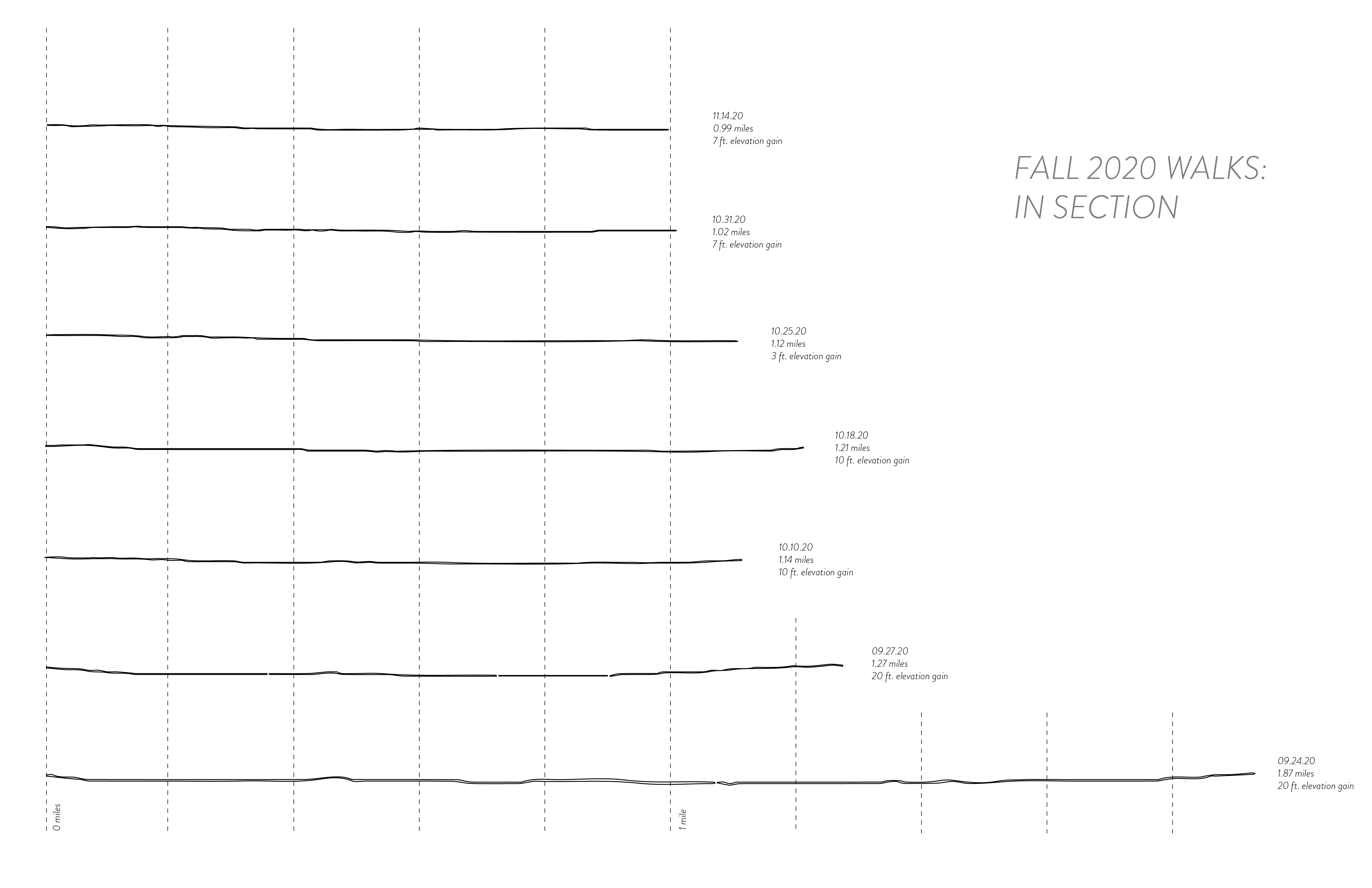

field sketches at five sites along the pruning circuit. created 10.31
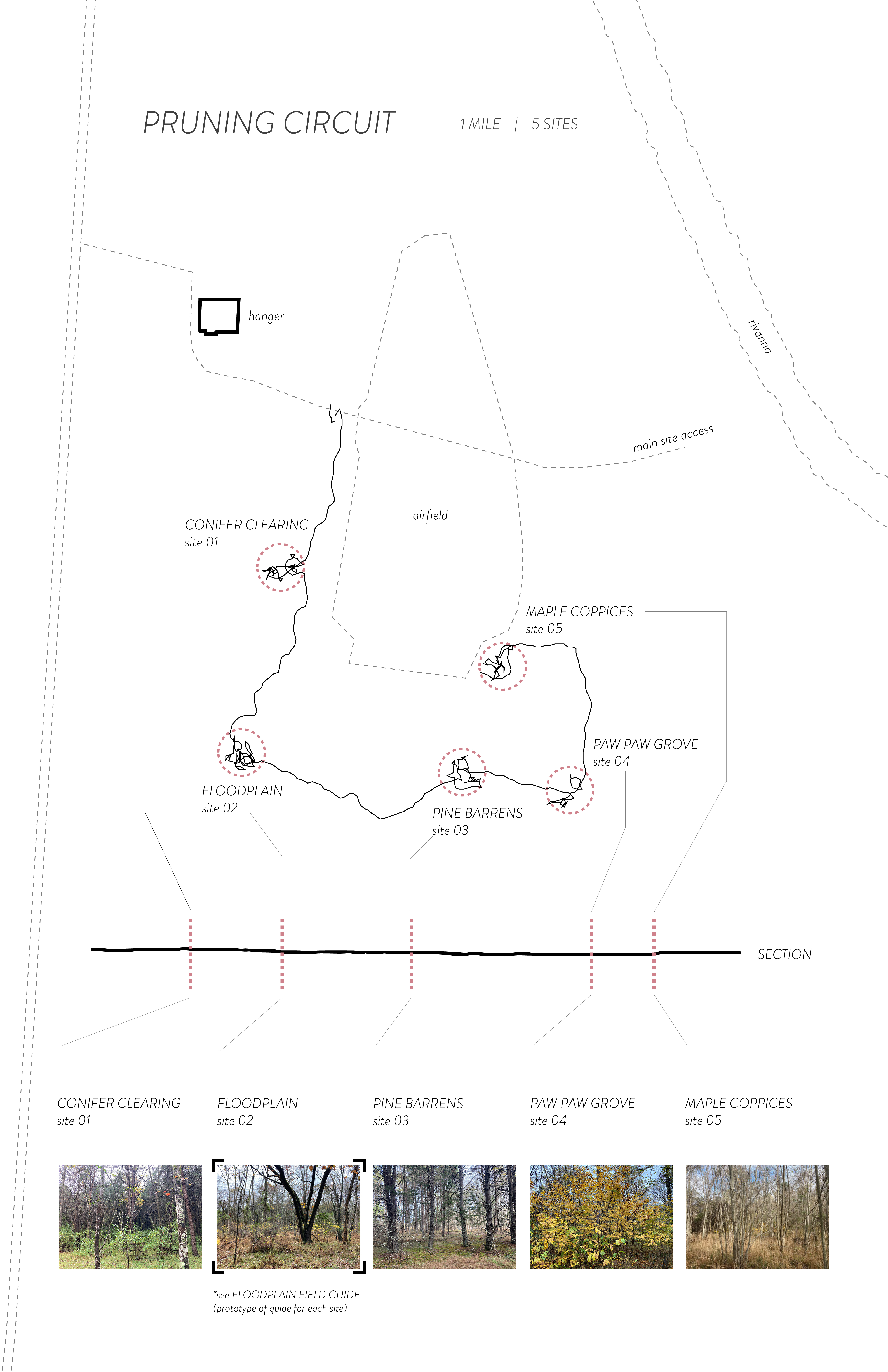
Prototype Site Field Guide Pages

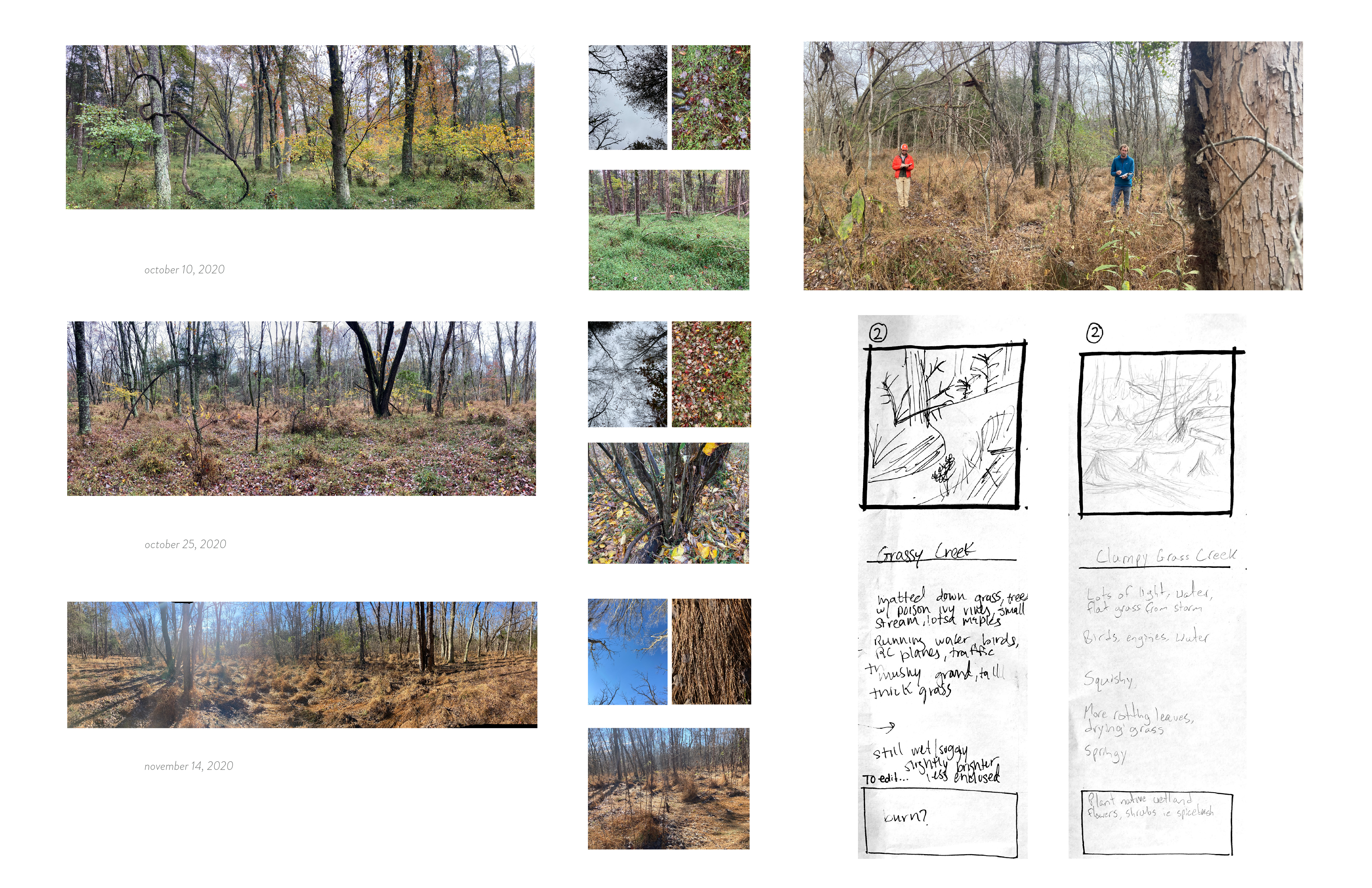
Text: What I call the floodplain sits between the creek course and the evergreen edge that borders the airfield to east and south. In September, the ground was lush, with a verdant carpet of green stiltgrass. The dense canopies of the multi-stem red maples cast pools of shade; the dead ash trees long, spear like shadows lined the ground. Early October, the floodplain was bright with bands of color that wove through the maple and ash trunks. Spicebush streaked across the scene, articulating the course of the creek in it’s sudden audaciousness; very red red maples and bronze beech dotted the plain, commanding attention beyond their size. The poison ivy was vibrant too -- daunting. Come November, texture ruled. Flood events each left a textile of grasses matted in record of rain and colorings of leaves massed in wet depressions and against the upstream side of clumps of thicketed shrubs. With the herbaceous layer suppressed, the articulation of the ground plane through either gestures (fallen logs) or fields (clumps of shrubs) was legible. The monochrome, deeply textured ground plane set off the blonding bark of the ash, the EAB trails etched in the desiccated wood, the shagginess of poison ivy and flakiness of grape, the silky-ness of mushrooms and the definition of individual mosses matted together.
Paw Paw Place
september
october
november






